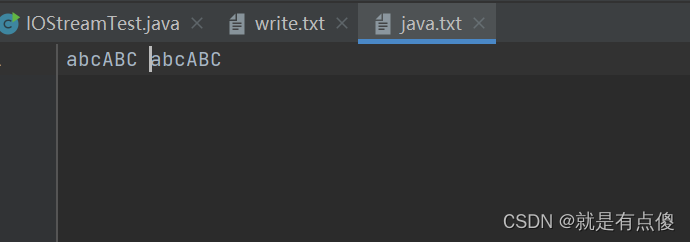IO流的概述和分类
IO流分为输入输出流
输入流:读数据
输出流:写数据
流:是一种抽象的概念,是对数据传输的总称,流的本质是数据传输
按照数据类型来分
字节流:字节输入流,字节输出流
字符流:字符输入流,字符输出流
字节流和字符流怎么使用:
如果是通过记事本能够读懂的(比如汉字),我们用字符流,否则就用字节流。当我们不知道使用字节流还是字符流是就要用字节流。
字节流写数据
字节流的抽象基类
InputStream :这个抽象类是所有字节输入流的父类
OutputStream:这个类是所有字节输出流的父类
子类名特点:子类名称都是以其父类作为子类名
在IO流写之前 我们是没有创建文件的

package day1;
import java.io.FileNotFoundException;
import java.io.FileOutputStream;
import java.io.IOException;
public class IOStreamTest {
public static void main(String[] args) throws IOException {
FileOutputStream fos = new FileOutputStream("java.txt");
fos.write(97);
fos.write(97);
fos.close();
}
}
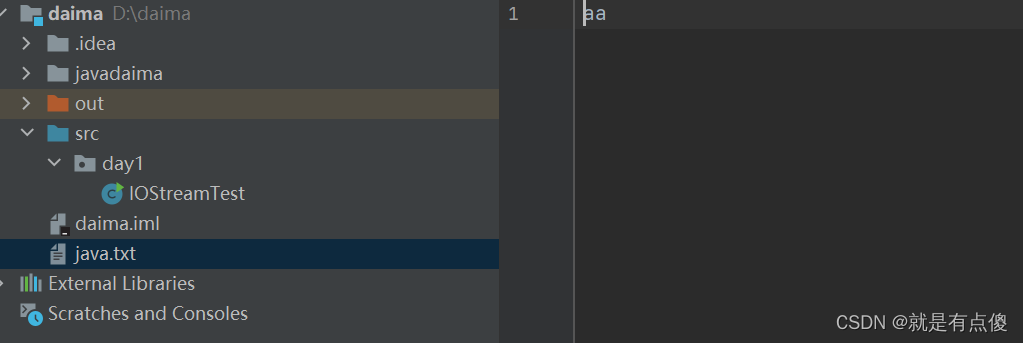
当我们运行的时候自动创建了文件夹
FileOutputStream的作用
调用系统创建了文件
创建了字节输出流对象
让字节输出流对象指向创建好的文件
最后
一定要记得关闭文件输出流并释放此流相关的任何系统资源
字节流写数据的三种方式
void write(int b)将指定字节写入此文件输出流
void write (byte[] b)将b.length字节从指定的字节数组写入此文件输出流一次写一个字节数组数据
void write (byte[] b ,int off,int len)将len字节从指定的字节数组开始,从偏移量off开始写入此文件输出流,一次写一个字节数组数据
package day1;
import java.io.FileNotFoundException;
import java.io.FileOutputStream;
import java.io.IOException;
public class IOStreamTest {
public static void main(String[] args) throws IOException {
FileOutputStream fos = new FileOutputStream("java.txt");
byte[] bytes = "abcABC".getBytes();
fos.write(bytes);
fos.close();
}
}
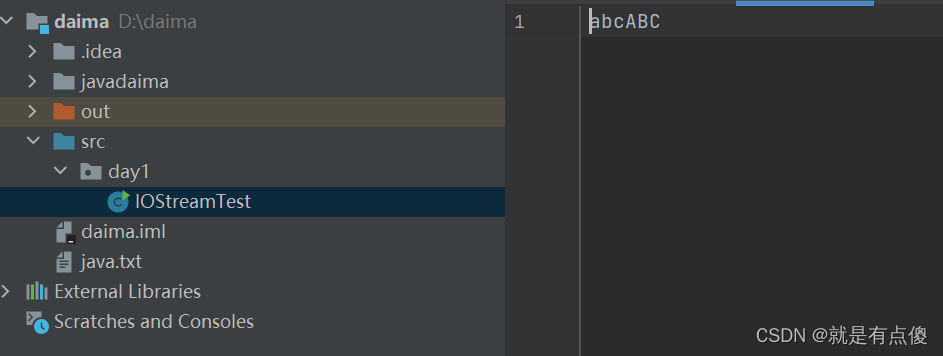
package day1;
import java.io.FileNotFoundException;
import java.io.FileOutputStream;
import java.io.IOException;
public class IOStreamTest {
public static void main(String[] args) throws IOException {
FileOutputStream fos = new FileOutputStream("java.txt");
byte[] bytes = "abcABC".getBytes();
fos.write(bytes,1,3);
fos.close();
}
}
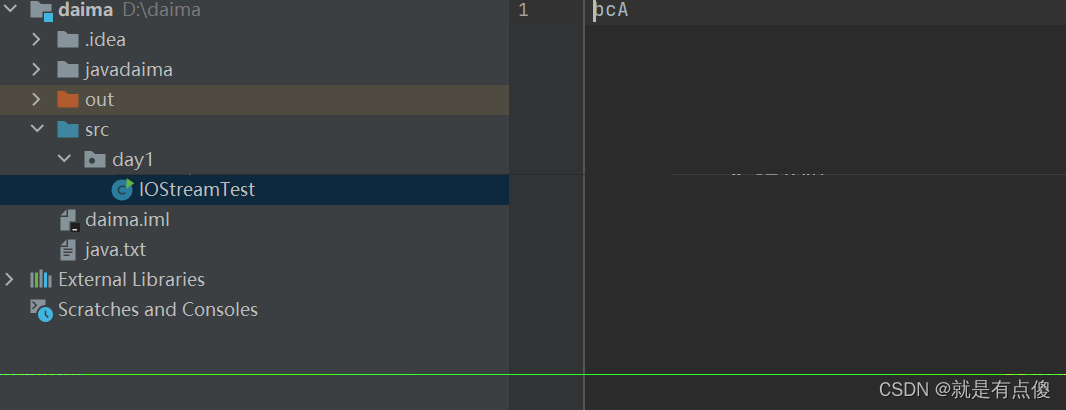
fos.write(bytes,1,3);是指从byte[]数组的第一个开始写三个
字节流如何换行
package day1;
import java.io.FileNotFoundException;
import java.io.FileOutputStream;
import java.io.IOException;
public class IOStreamTest {
public static void main(String[] args) throws IOException {
FileOutputStream fos = new FileOutputStream("java.txt");
byte[] bytes = "abcABC".getBytes();
fos.write(bytes);
fos.write("\r".getBytes());
fos.write(bytes);
fos.write("\t".getBytes());
fos.write(bytes);
fos.close();
}
}
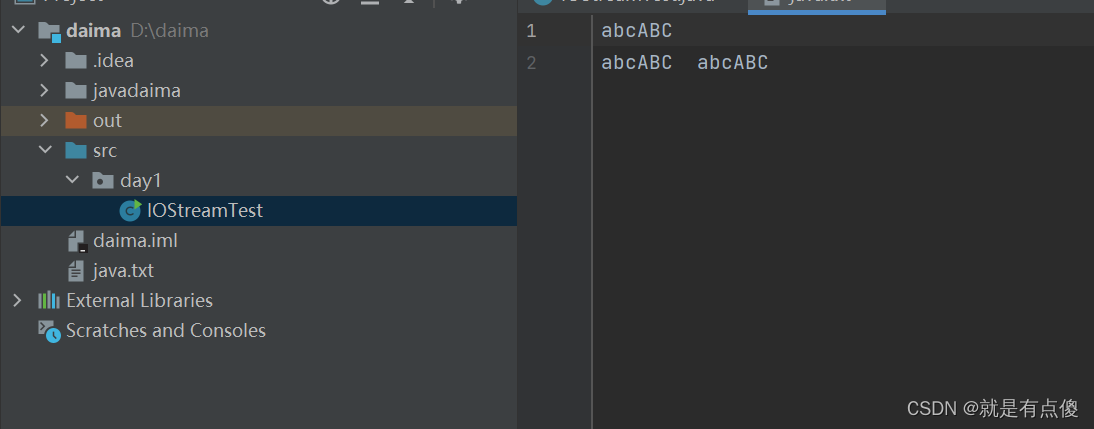
字节流如何追加写入
package day1;
import java.io.FileNotFoundException;
import java.io.FileOutputStream;
import java.io.IOException;
public class IOStreamTest {
public static void main(String[] args) throws IOException {
FileOutputStream fos = new FileOutputStream("java.txt",true);
byte[] bytes = "abcABC".getBytes();
fos.write(bytes);
fos.write("\r".getBytes());
fos.write(bytes);
fos.write("\t".getBytes());
fos.write(bytes);
fos.close();
}
}
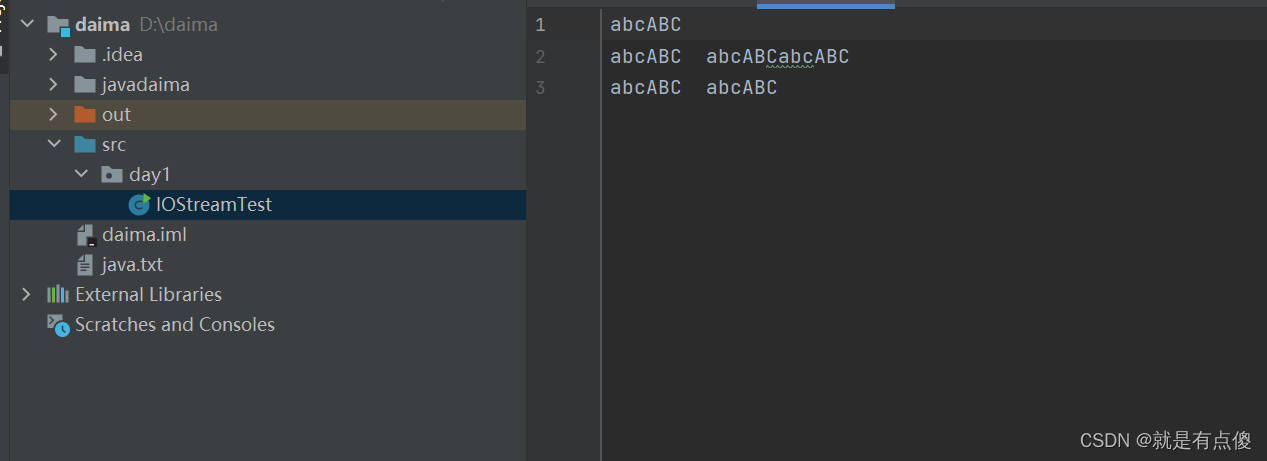
其中FileOutputStream fos = new FileOutputStream("java.txt",true);后面的true就是追加写入,默认为false
字节流读数据
FileInputStream(String name)
package day1;
import java.io.FileInputStream;
import java.io.FileNotFoundException;
import java.io.FileOutputStream;
import java.io.IOException;
public class IOStreamTest {
public static void main(String[] args) throws IOException {
FileInputStream fis = new FileInputStream("java.txt");
int by=fis.read();
while (by!=-1){
System.out.print((char)by);
by= fis.read();
}
fis.close();
}
}

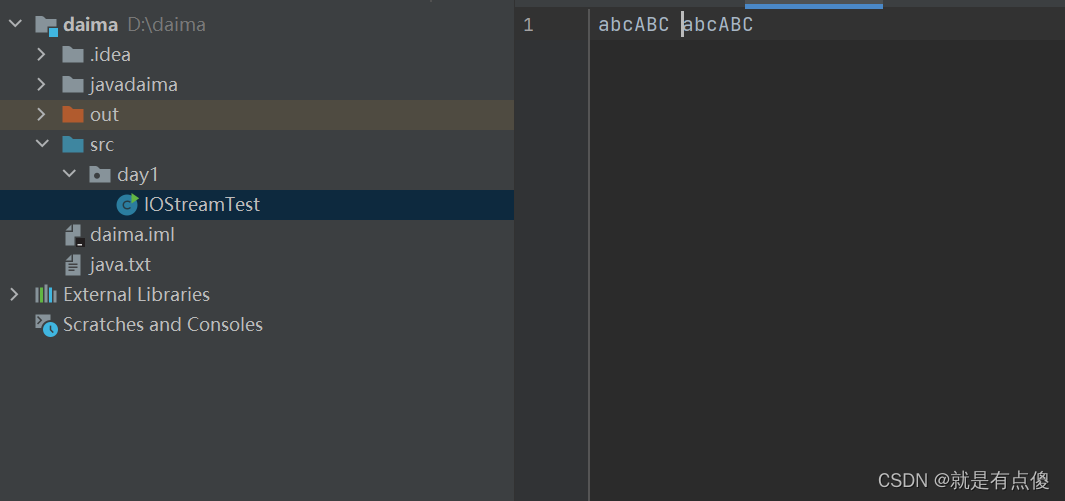
注意 by= fis.read();这一行一定不能少 否则代码会一直循环读第一个字节
对于读字节的优化如下
int by;
while ((by=fis.read())!=-1){
System.out.print((char)by);
}
复制文件
package day1;
import java.io.FileInputStream;
import java.io.FileNotFoundException;
import java.io.FileOutputStream;
import java.io.IOException;
public class IOStreamTest {
public static void main(String[] args) throws IOException {
FileInputStream fis = new FileInputStream("java.txt");
FileOutputStream fos = new FileOutputStream("write.txt");
int by;
while ((by=fis.read())!=-1){
fos.write(by);
}
fis.close();
fos.close();
}
}
